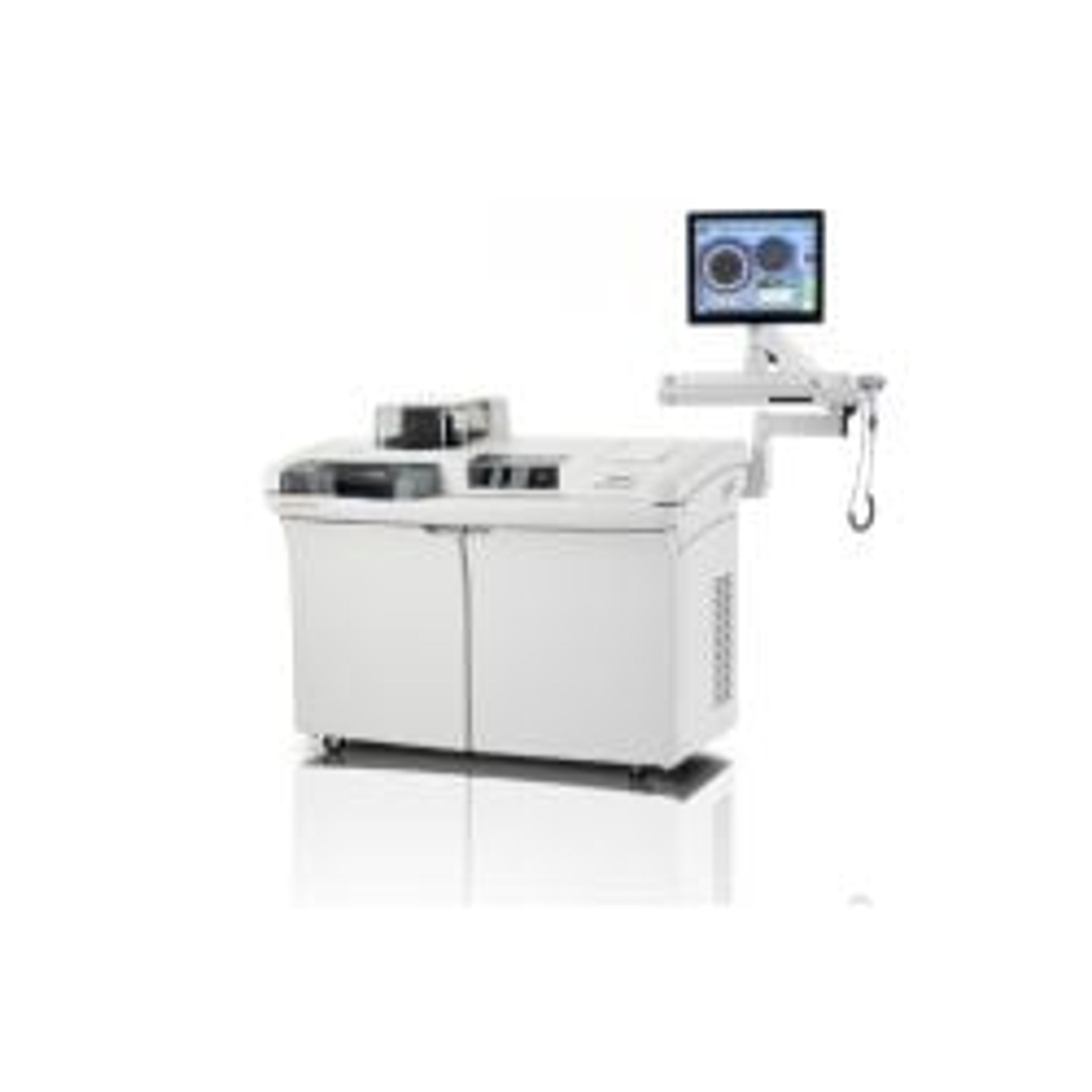Cytokine storm syndromes and the lab’s role in early intervention
A closer look at the markers that help distinguish HLH, CRS, and other cytokine storm syndromes
5 Nov 2025
Dr. Audi Setiadi, MD, FRCPC, hematopathologist and investigator at BC Children’s Hospital and Clinical Associate Professor at the University of British Columbia
Hyperinflammatory syndromes, often described under the umbrella of ‘cytokine storm syndromes’, represent one of the most pressing challenges in clinical medicine today. These conditions occur when the immune system, designed to protect the body, becomes dysregulated and drives uncontrolled inflammation. The consequences can be devastating, ranging from multi-organ damage to death.
In a recent SelectScience® webinar, Understanding Hyperinflammatory Syndromes: From Recognition to Response, Dr. Audi Setiadi, MD, FRCPC, Medical Director and Clinical Associate Professor at British Columbia Children’s Hospital and the University of British Columbia, explored the laboratory aspects of diagnosing and managing these syndromes. Sponsored by Siemens Healthineers, the session focused on hemophagocytic lymphohistiocytosis (HLH) and cytokine release syndrome (CRS) associated with CAR T-cell therapy, while highlighting the evolving role of laboratory diagnostics in timely recognition and intervention.
The paradox of immunity
Dr. Setiadi opened her talk by framing the central paradox of hyperinflammatory syndromes, “I’m going to take you through a journey through the paradox of immunity, where the system that’s designed to protect us spirals out of control, instead causing widespread harm to the body.”
Cytokine storm syndromes can be triggered by a wide range of factors, including infections, malignancies, autoimmune conditions, and therapies such as CAR T-cell treatment. Regardless of the trigger, the result is the same: excessive immune activation and uncontrolled cytokine release. As Dr. Setiadi explained, “With all of these, there is a tip of balance towards pro-inflammatory pathway, which produce large quantities of cytokines… leading to what we call cytokine-induced collateral damage, which is the end organ damage that you see with these disorders.”
Hemophagocytic lymphohistiocytosis
HLH is one of the most severe forms of cytokine storm syndrome. It is characterized by uncontrolled activation of cytotoxic lymphocytes and macrophages, resulting in massive cytokine release.
Dr. Setiadi illustrated this with the case of a 20-month-old child who presented with fever, cytopenias, splenomegaly, and markedly elevated inflammatory markers. The child was ultimately diagnosed with HLH secondary to viral infections, with a possible underlying genetic predisposition. Despite aggressive treatment, the patient died.
This case underscored the diagnostic challenges of HLH. As Dr. Setiadi noted, “The true HLH is actually a relatively rare disorder. And in pediatrics, up to one-fourth of HLH cases are thought to be familial or have genetic causes.” Yet the syndrome often mimics more common conditions such as sepsis, liver failure, or autoimmune disease.
Traditional diagnostic criteria, such as the HLH-2004 guidelines, rely on features including fever, splenomegaly, cytopenias, hypertriglyceridemia, and elevated ferritin. But many of these markers are nonspecific. “High ferritin, even as high as 10,000 or 50,000 in adults, may not be informative or diagnostic of HLH,” Dr. Setiadi emphasized, pointing out that such elevations can also occur in renal failure or malignancy.
To improve specificity, newer approaches such as the Optimized HLH Inflammatory Index (OHI) propose higher thresholds for ferritin and soluble IL-2 receptor levels. Flow cytometry-based assays, including perforin and CD107a testing, are also proving valuable in identifying genetic forms of HLH by pinpointing defects in cytotoxic pathways.
Cytokine profiling and its emerging diagnostic value
One of the most promising developments is cytokine profiling. By examining patterns of cytokine elevation, clinicians may be able to distinguish HLH from mimicking conditions.
“Very high interferon gamma and IL-10 expressions are helpful to distinguish between HLH versus sepsis and other non-septic HLH mimics,” explained Dr. Setiadi. In contrast, IL-6 is typically not elevated in HLH but is markedly elevated in sepsis. Ratios such as IL-18 to CXCL9 may also help differentiate autoimmune-associated HLH from familial forms.
Because cytokine analysis is not yet widely available, researchers are also exploring more accessible markers. Dr. Setiadi described her group’s work on C-reactive protein (CRP), “Knowing that IL-6 is not usually elevated in HLH, we asked whether lower CRP level can actually distinguish HLH from other disorders. And indeed, that’s what we saw, that in HLH, the CRP levels are actually lower than adult-onset Still’s disease and COVID-19 cytokine storms.”
CAR T-cell therapy and cytokine release syndrome
The webinar discussion then turned to cytokine release syndrome, a frequent and potentially life-threatening complication of CAR T-cell therapy. CAR T-cells, genetically engineered to recognize and attack cancer cells, have revolutionized the treatment of certain leukemias and lymphomas. But their potent activity can trigger dangerous immune responses.
“When the CAR T-cells engage with the cancer cells, it releases large amounts of interferon gamma, which then recruits macrophages… and these cytokines can also signal to the endothelium, which can result in vascular leakage and neurological symptoms,” explained Dr. Setiadi.
CRS occurs in up to 80% of pediatric patients receiving CAR T therapy for B-cell acute lymphoblastic leukemia, typically within the first week of infusion. The discovery that IL-6 plays a central role in CRS was pivotal. Dr. Setiadi recounted the landmark case of Emily Whitehead, the first pediatric patient to receive CD19 CAR T-cell therapy in 2012. When she developed severe CRS, her doctors administered tocilizumab, an IL-6 receptor blocker. “It was almost like a miracle; it worked wonderfully, and the patient got better, moved out of ICU, and eventually achieved remission,” said Dr. Setiadi.
Yet CRS shares overlapping features with HLH and sepsis, making diagnosis difficult. Moreover, CAR T-cell therapy itself can trigger HLH-like syndromes, further complicating the clinical picture. “The current diagnostic criteria for HLH are really suboptimal for use following CAR T-cell therapy because a lot of the clinical and laboratory features can overlap,” Dr. Setiadi cautioned.
The laboratory at the center of progress
Throughout her presentation, Dr. Setiadi emphasized the central role of the laboratory in navigating cytokine storm syndromes. Traditional assays such as ELISA and bead-based arrays, while valuable in research, are often too slow and labor-intensive for urgent clinical decision-making.
“We really need an automated immunoassay platform that’s not just sensitive, but also has rapid turnaround time, allowing analysis of single or a small number of samples without waiting to batch them,” she explained. Standardization across platforms and sample types will also be essential if cytokine profiling is to become a routine part of clinical care.
Looking ahead
Hyperinflammatory syndromes sit at the center of immunology, hematology, oncology, and infectious disease. They demand a multimodal diagnostic approach that integrates clinical suspicion with laboratory data, genetic testing, and cytokine profiling.
As Dr. Setiadi concluded, “Cytokine storm syndrome is quite a diverse group of conditions that requires a multimodal approach and multiple diagnostic tools. Targeted therapy against certain cytokines and pathways are emerging, and that really highlights the need for rapid, accessible, and reliable clinical lab testing for timely identification and management.”
For clinicians, laboratory professionals, and researchers, the message is that understanding cytokine dysregulation is no longer a niche concern but a central aspect of modern medicine. By advancing laboratory tools and knowledge, the field is moving closer to ensuring timely recognition and effective intervention in these life-threatening syndromes.
Watch the full P.A.C.E.® and ACCENT® accredited webinar on demand to hear Dr Audi Setiadi share expert insights into HLH, CRS, and the future of cytokine diagnostics with Siemens Healthineers and SelectScience.

